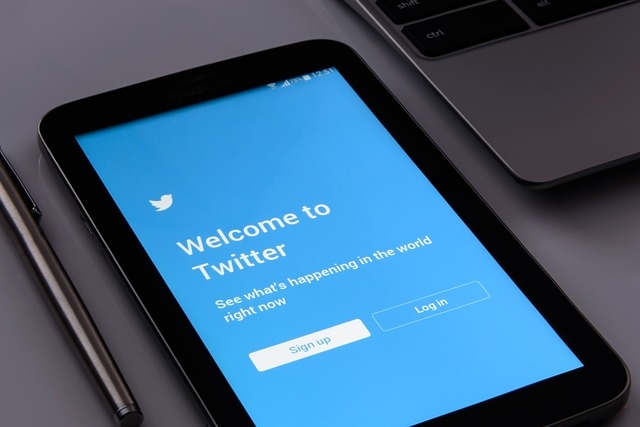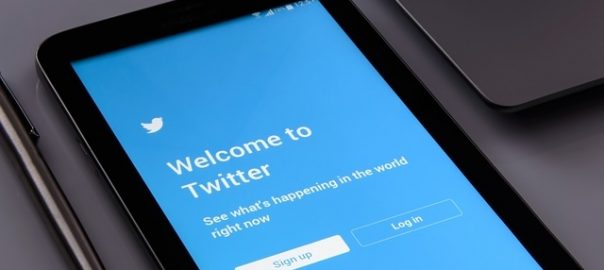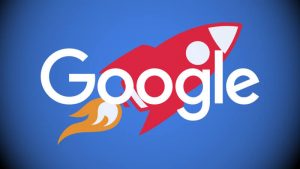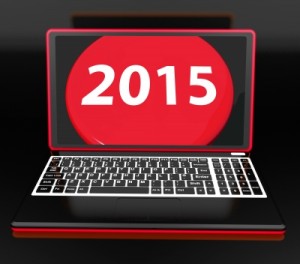— July 10, 2017

Photo-Mix / Pixabay
It would probably be a good idea to confirm this with someone who has a degree in business history, but it’s highly likely that employer branding has been an integral part of business since…forever.
The second caveman to realize he could sell extra meat probably used employer branding to recruit skilled hunters who already worked for the first caveman to come to the same realization.
While the concept is probably prehistoric, the term itself was introduced in the 1990s and it developed into the industry we see today.
In essence, employer branding is how a company presents itself as a great employer, someone worth working for, and committing one’s professional future to. Today, it is more important than ever before, especially in certain industries where talent is scarce and potential employers are many.
Luckily, employers today have a huge number of employer branding tools, including entire software solutions developed for this purpose alone. One of the best tools in your kit will be Twitter, which wasn’t developed for this purpose alone but has so much potential.
The numbers
In order to understand why using Twitter for employer branding is a smart practice, we have to do a bit of figure-digging.
While the sheer number of Twitter users cannot really compete with Facebook’s, it should be pointed out that Twitter users are far more likely to interact with brands and companies.
Almost half of all Twitter users follow corporate entities, while only 16% of users of other social networks do the same. In addition to this, the level of actual interaction is also greater with Twitter where users learn about products, provide their opinions, and even seek customer support.
This means that the chances are far greater someone will see job-related content that pertains to a company’s employer brand on Twitter than on any other social network.
Another figure that might be of interest is that more than half of Twitter users make more than $ 50,000 a year and that they are more likely to have a college degree. In other words, this increases one’s chances of reaching top talent that is worth pursuing for one’s company.
Twitter also has a great potential for international reach, as the user base is much dispersed. Twitter is particularly popular in Japan and Latin America (especially Central America), as well as a number of European countries where a significant deal of users often tweet in English (in Netherlands, more than half of the tweets are in English). For companies that employ internationally or that wish to tap foreign job seeker markets, this means a lot.
It should also be pointed out that Twitter is the most balanced social network when it comes to gender, with roughly the same percentage of male and female users. This is definitely something that will be of interest to many companies.
More than numbers
Besides the obvious allure of certain figures and percentages, Twitter has also grown into an ecosystem with certain idiosyncrasies that make it perfect for employer branding.
For one, Twitter feels quicker than most other social networks, if not all of them. Within seconds of something happening in the world, Twitter is ablaze (covfefe, anyone?) and there are thousands of great tweets to enjoy and retweet. A savvy company can instantaneously provide a comment on a burning issue and position itself as a certain kind of an employer.
A recent example of this has been the #WeAreStillIn initiative where American companies, political and public leaders voice their disagreement with President Trump’s decision to pull the United States from the Paris Agreement.
Big players like Microsoft and IBM are in.
We’re proud to stand w/ over 1,000 leaders to say #WeAreStillIn. We will #ActOnClimate & honor Paris commitments: https://t.co/OKCdG5R2es pic.twitter.com/l5oU8mScnR
— Microsoft_Green (@Microsoft_Green) June 5, 2017
Here’s why @IBM firmly supports the #ParisAgreement: https://t.co/RpJ4QYpDPu pic.twitter.com/PSkXzj2zPh
— IBMPolicy (@IBMpolicy) June 1, 2017
As well as smaller companies such as Optoro and Cascadia Consulting.
A letter from our co-founders about @POTUS‘s plans to withdraw from The Paris Agreement https://t.co/xIzMknxO18 #wearestillin pic.twitter.com/TU9t6ggiic
— Optoro (@optoroinc) June 2, 2017
Proud to support those in the public and private sector that are continuing to fight for climate action! #wearestillin #ParisAgreement pic.twitter.com/x8ughTmPJc
— Cascadia Consulting (@CascadiaCG1) June 2, 2017
Someone who’s looking for a job in these industries and is environmentally aware will remember which companies stood up for something on Twitter.
Another reason why Twitter can be a great employer branding tool is that it can both be very serious and very jovial, depending on the situation. A company can share serious news and papers written by their employees, showing off the high level of professionalism that is present in the company. Conversely, they can share a short video of a company retreat with bungee jumping, paintball battles (in the obligatory slow-mo), and stuff like that.
It is also possible to increase your Twitter reach with a few smart practices, ensuring that your branding tweets reach as many job seekers as possible.
Finally, its “lightness” is much more appropriate for employer branding as it doesn’t feel as cumbersome as Facebook status updates. For one, it is easier to ignore a tweet that you don’t care about than it is a Facebook post.
Learning from the branding greats
The best place to start learning how to do employer branding on Twitter is to take a look at what some of world’s largest employers are doing.
HP
Hewlett-Packard is one of the biggest companies in the world and their operation spans more than 170 countries worldwide. This provides them with more than enough material for their employer branding Twitter account called @HPCareers.
Their pinned tweet (at the moment of writing this article) sends across a simple message that talent is the only criteria for getting a job at HP, adding an appalling statistic about African American job candidates being three times more likely to be turned down in an otherwise same situation.
At HP, we’re committed to diversity and our message is simple – we’re hiring & talent is our only criteria. Join us: https://t.co/YoPdAgvwQO pic.twitter.com/Jxr2qfgcj0
— HP Careers (@HPCareers) April 26, 2017
In today’s U.S., this is a very important message.
They often share their new office spaces across the world.
Starting today, @HPSingapore has a new office that came with this cool place to chill. Join us there: https://t.co/gdhM6cJp2g #TravelTuesday pic.twitter.com/ZvcDpNZluI
— HP Careers (@HPCareers) June 6, 2017
They show that their employees are not interchangeable cogs in the machine.
Meet Karla! When not partnering w/ customers in Finance, she enjoys her passion as a Latin music DJ. Join her in : https://t.co/Bm6D6RHN3Q pic.twitter.com/MA8YHgKl9c
— HP Careers (@HPCareers) May 31, 2017
They even feature advice from their talent acquisition people.
Are you preparing yourself for a job interview? Do it right with this #WednesdayWisdom piece from our TA Consultant, Ramona. pic.twitter.com/Y5Wv9sAIGi
— HP Careers (@HPCareers) May 31, 2017
They also show how much their employees care about social issues.
120,000 packs of rice & grains – #HPProud of our Singapore team who couldn’t sit out of the challenge and did good together with @Rise2030. pic.twitter.com/oyx5VrZnXS
— HP Careers (@HPCareers) June 2, 2017
HP really does Twitter employer branding the right way. It may feel a bit bland and formulaic at times, but you have to remember they are an enormous corporation and that sometimes it is best to play it safe.
UPS
UPS definitely runs one of the best employer branding Twitter accounts called @UPSjobs.
They understand what job seekers are interested in.
Our uniforms rock, but our benefits are better! Learn more and apply today. https://t.co/B6K2NdGNMw https://t.co/uqDnRNel0V
— UPS Jobs (@UPSjobs) February 26, 2016
They feature interesting stories about their employees.
Kokomo UPS driver marks 25 years of accident-free deliveries https://t.co/RMYMDTuEQB via @KokomoTribune
— UPS Jobs (@UPSjobs) April 21, 2017
And although they are not impervious to an occasional cliché…
UPSers are like a family who works together to deliver results. Join our team. https://t.co/gVFJXPlBxp pic.twitter.com/XvX1EW4oLc
— UPS Jobs (@UPSjobs) June 3, 2017
They know how to get people interested in even the least attractive positions.
As a Part-time Package Handler, you can receive up to $ 25,000 in #education assistance. Apply today: https://t.co/gVFJXPlBxp #debtfree pic.twitter.com/rnCYYInfeN
— UPS Jobs (@UPSjobs) June 1, 2017
Who couldn’t use $ 25,000 in education assistance?
Above everything, they understand the value of video in Twitter employer branding.
Are you a veteran looking for the right starting point? Learn more: https://t.co/PQN0FcDjyZ pic.twitter.com/LXKhzzshWp
— UPS Jobs (@UPSjobs) June 6, 2017
It’s no secret that Google knows how to treat their employees. They are also famous for providing some of the most insane perks for their employees.
This is why their employer branding account @lifeatgoogle is probably the most straightforward out there. It is also the easiest to run, as they simply give glimpses of behind-the-scenes of what happens at Google and that’s great content on its own.
For example, when you have the entire cast of Silicon Valley come for a chat with the employees, you really don’t need much more to come across as a cool place to work.
Today on campus, a few “experts” stopped by to chat with Googlers about middle-out compression & season 4 of @SiliconHBO. pic.twitter.com/PzgBBLp6kk
— Life at Google (@lifeatgoogle) April 12, 2017
Or when the guy who literally invented copy & paste drops in.
The inventor of cut and copy & paste, Larry Tesler, visited campus today to talk about the future of editing in the era of spoken commands. pic.twitter.com/dqE3i7crUx
— Life at Google (@lifeatgoogle) April 17, 2017
Their account also lets potential job candidates understand that Google is more than just being cool and shaping the web.
See how Googlers are partnering up with @UNRefugeeAgency to answer the world’s questions about Syria ? https://t.co/9NOzTiTl95 pic.twitter.com/TCdMUTivdz
— Life at Google (@lifeatgoogle) May 22, 2017
Marketing lessons learned from them
By analyzing some of the world’s best employer branding practices on Twitter and applying some common sense, we can learn a couple of lessons that can help any company use Twitter to attract top talent.
Let your employees shine
First and foremost, your employer branding efforts on Twitter should always be based on what your existing employees have to say. Job seekers know that potential employers will often go to great lengths to present themselves as great employers, but hearing or reading actual employees say good things really makes a difference.
It also shows potential candidates that your company cares about what their employees say and do. For instance, if someone from your company does something truly extraordinary, share it on Twitter. Maybe make a little video of it.
Inside looks at how your company operates will also be more than welcome and a great way to show off how great it is working in your company.
One word of warning, though – never fake it.
If your employees work hard, show it. If there are stressful situations, show them.
No one wants to see a 1970s-style promotional video.

Show the process
Applying for a job can be stressful.
Scratch that.
Applying for a job is stressful.
People feel immense pressure when they go through the hiring process and sharing some details about your process can be a fantastic motivation for them to choose you.
For example, let your hiring manager say a thing or two about best ways for applicants to behave and what to expect during the interviews. Simply featuring your HR people on your Twitter account will give future candidates a familiar face to look forward to as they come in for interviews.
You can even go a step further with this. Ask a few (best choose those who get hired) candidates to take photos of the moments when they learn they are hired. Ask them to share their experiences in short videos later. Perhaps have them describe their onboarding period (also potentially stressful), or even follow them around for the first few months, making a little video montage later.
Of course, all of this flies only if they’re up for it, but we don’t have to tell you that.
Always use visuals
Another thing to remember is that you simply have to have visual content. Go through the three aforementioned Twitter accounts and try to find a single tweet that didn’t feature an image or a video. You would have to do some scrolling to do so.
If you plan to do any Twitter employer branding, make sure to incorporate visual elements such as images or, even better, videos. Videos are nowadays super-cheap to make, although you will want to learn at least some basics to make it look as professional as possible.
Another way to go (if you can afford it) is animated. It can be a great way to set yourself apart.
Your company is not just a workplace
The modern job seeker is looking for more than just a regular paycheck and health insurance. They are looking to make a difference. They are looking for companies that will show they are invested in what goes on in the world.
Your corporate Twitter account should always feature stories of your company’s charity efforts, as well as comments on certain issues that you have a specific opinion on. Of course, this is something that has to be handled spectacularly carefully, so as not to alienate entire portions of the candidate pool.
Once again, you should never simply jump on an issue’s bandwagon unless your company really cares about certain issues. Such deceitful practices are really easy to smell out and you can rest assured potential candidates will do so.
Digital & Social Articles on Business 2 Community
(106)
Report Post




